Trade Show Displays with Monitors: Enhancing Engagement and Visibility
Integrating trade show booth displays with monitors has become an essential aspect of modern exhibition design. As communication tools evolve, exhibitors are finding new ways to captivate audiences and effectively deliver their messages. Monitors and videos are not just supplementary; they have emerged as focal points in many trade show booths, transforming passive visits into interactive experiences. Displays equipped with video and monitor capabilities enable businesses to showcase their products and services dynamically, resulting in a more engaging booth.
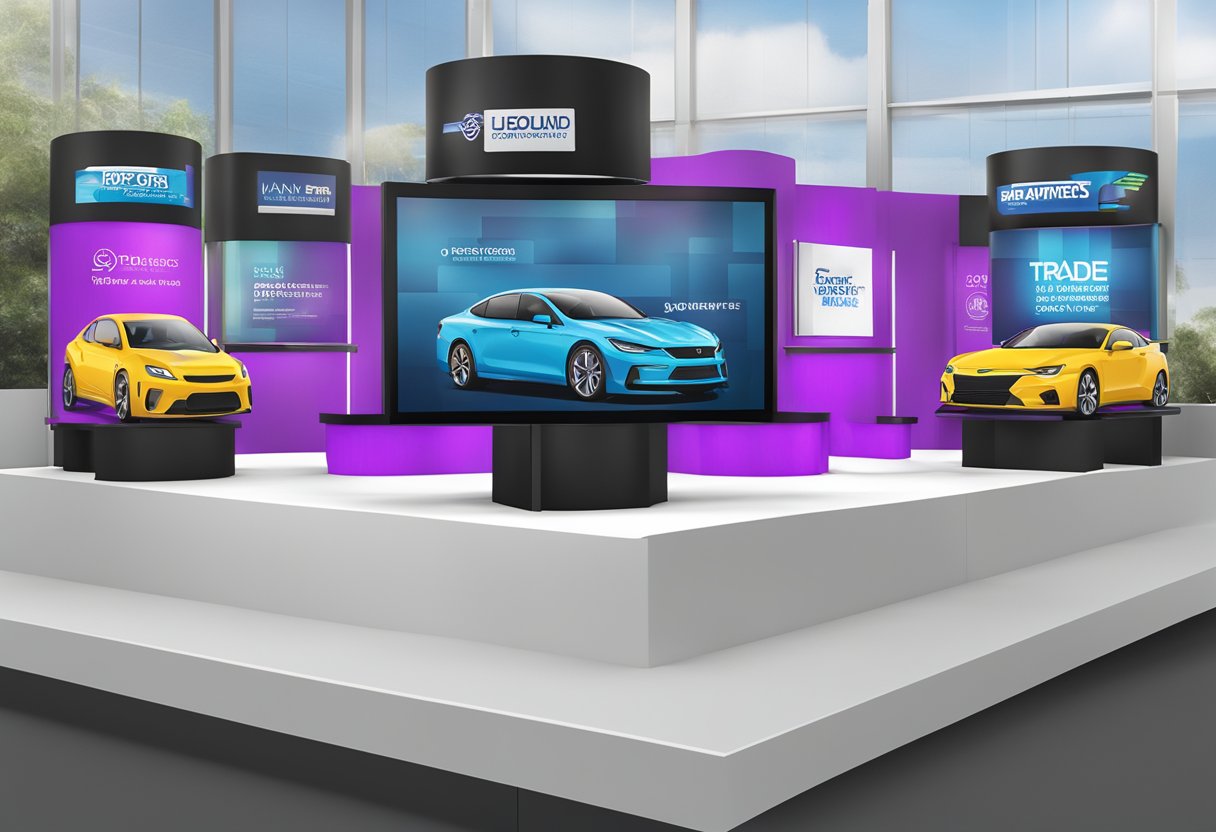
The effectiveness of a good trade show display hinges on the seamless incorporation of technology. Exhibitors must consider the logistics of setting up sophisticated monitor displays, including the necessary hardware and content preparation. The goal is to ensure that the technology enhances the exhibitor’s narrative without overshadowing the product or service being showcased. Planning and expert collaboration play critical roles in creating an impactful display that captures attendees’ attention and facilitates meaningful connections.
Key Takeaways
-
Displays with monitors create engaging, interactive trade show experiences.
-
Preparation and technology integration are crucial for effective display setups.
-
Collaboration with design experts optimizes booth impact and logistical flow.
-
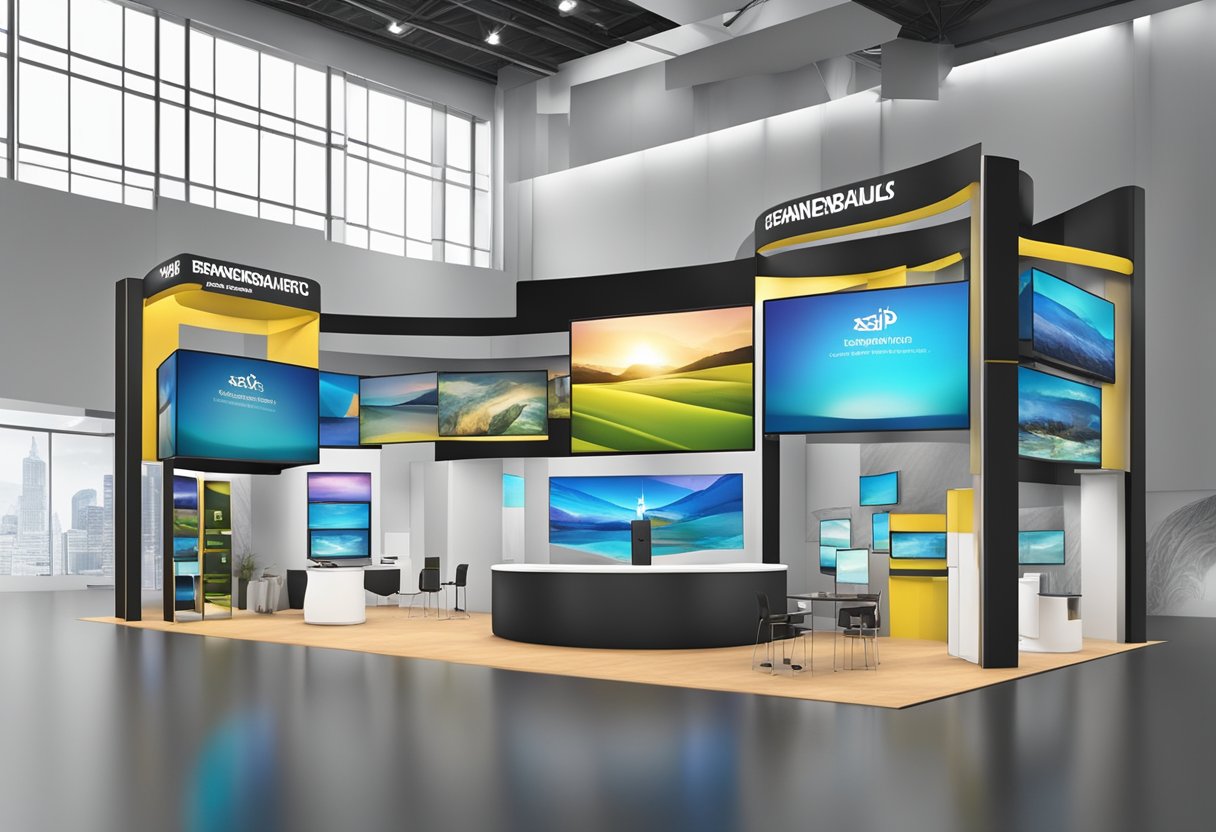
Understanding Trade Show Displays
When approaching trade show displays, it is essential to recognize the variety available and how each can be tailored to effectively convey and highlight a brand’s own style and message. The right display will not only represent the brand but also withstand the demands of various events.
Types of Trade Show Displays
Trade show displays come in several forms, such as pop up displays, fabric displays, modular displays, and backlit displays. Pop up displays offer swift assembly and are highly portable, whereas fabric displays provide a seamless look. Modular displays give exhibitors the flexibility to reconfigure their trade show booth for different events, and backlit displays draw attention through illuminated graphics.
Selecting the Right Size and Layout
The size and layout of trade show displays should match the allocated booth space and the nature of competition at the event. Inline displays are common and fit within the dimensions of a standard booth, typically 10′ x 10′. For larger events, a greater area may be necessary to house more elaborate displays, furniture or additional exhibit modules.
Incorporating Engaging Graphics
Graphics are a critical component of a trade show display, with the ability to engage attendees from a distance. High-quality, vivid graphic displays should convey the brand message clearly and be visible even in crowded environments. Customization options also allow for distinct brand imagery and graphic, to be integrated into the graphic design.
The Importance of Branding
Branding is pivotal in creating a memorable trade show display. The display should echo a company’s brand awareness efforts, using consistent colors, logos, and graphic themes. It acts as a three-dimensional representation of the brand, emphasising brand message and identity to make a lasting impression.
Durability and Longevity Factors
The durability and structure of a display are important, especially for businesses that participate in multiple shows. Portable trade show displays made of high-quality materials can withstand frequent use and transportation. Assessing durability upfront can result in a long-term investment that maintains a professional appearance over time.
Technological Integration in Trade Show Booths
Technological advancements have revolutionized the way trade show displays attract and engage attendees. From high-resolution monitors to virtual reality, these integrations are not gimmicks; they are powerful tools for enhancing brand messaging and visitor engagement.
The Role of Monitors
Trade show technology has evolved to include monitors as a staple component in modern booths and exhibits. Monitors serve as digital signage, presenting dynamic text and video content that can be easily updated and tailored to the audience. The implementation of video walls can extend this visual impact, creating a panoramic view that captivates passersby with cohesive branding.
Enhancing Displays with Digital Content
Content is king when it comes to digital engagement. Incorporating relevant and compelling digital content—from social media feeds to product demos—through monitors and iPad or tablet stations can significantly enrich the shop visitor’s experience. Visitors interact with displays not just as passive viewers but as active participants.
Innovative Solutions: VR and Interactive Media
Creating an immersive experience that stands out is key in a crowded trade show. Virtual reality and interactive media provide innovative solutions, offering visitors a hands-on opportunity to explore products or services in a memorable way. Virtual Reality and touchscreens can stimulate engagement, allowing visitors to dive deep into what is being offered.
Lighting and Sound Enhancements
The strategic use of lighting and sound can dramatically improve the effectiveness and quality of the display. Carefully adjusting lighting can enhance the display’s brightness and focus the attendee’s attention on next event, while a well-designed sound system can enrich the ambiance and ensure clear audio, complementing the visual stimuli of monitors and interactive media.
Maximizing Trade Show Impact
To maximize the impact of trade shows, exhibitors must leverage both design elements and digital tools to create a memorable presence and unique trade show. Effective messaging, attendee engagement, and digital strategy play critical roles in promoting and elevating brand awareness and enhancing marketing efforts.
Effective Messaging and Communication
Successful trade show displays hinge on conveying a clear brand message. Utilizing a medium that supports the narrative—whether through striking visuals or succinct text—ensures that the message resonates with attendees. Accessories like banner standshanging displays should align with the company’s identity, reinforcing consistent and coherent communication.
Attracting Attendee Attention
First impressions are vital in the bustling environment of a trade show. Premium displays with dynamic interactive media draw crowds, while strategically placed kiosks can guide attendees towards the company or main exhibit. The display’s design must serve as a beacon, cultivating curiosity and drawing in passersby with the promise of an engaging experience.
Driving Engagement Through Interactivity
Interactivity transforms passive observers into active participants. Incorporating interactive media such as touchscreens and product demonstrations within the booth encourages attendees to engage on a face-to-face level. This hands-on experience solidifies the connection between brand awareness and the attendee, turning a brief encounter into a memorable interaction.
Leveraging Social Media and Digital Platforms
Connecting the physical presence at the trade show with an online audience magnifies the reach of marketing efforts. Exhibitors should integrate their social media, website, and blog into the trade show experience. Live-tweeting, streaming presentations, or interactive sessions can extend the conversation beyond the trade show floor and create a buzz that lives on in the digital realm.
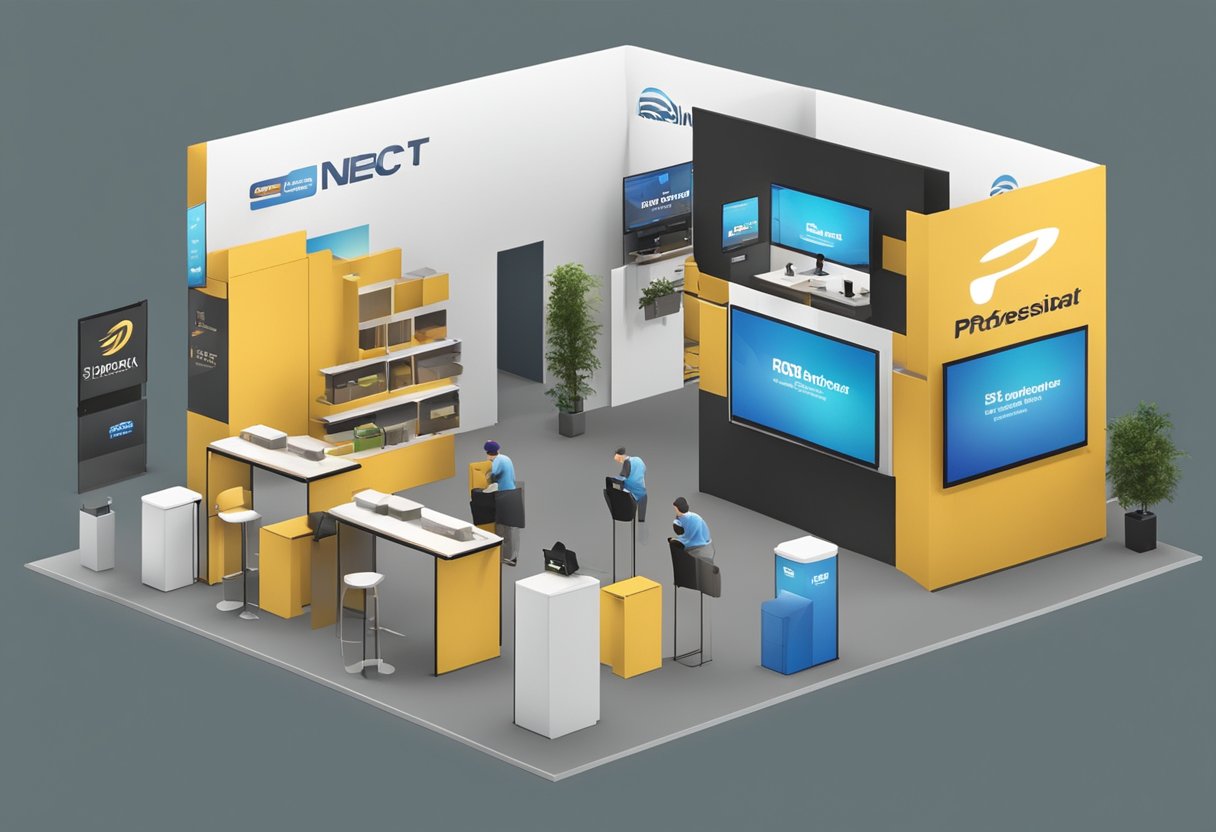
Logistics and Preparation
The effective management of logistics and the meticulous preparation of good trade show booth displays, especially those with monitors, are pillars of a successful trade show presence. Companies must consider budget constraints, storage and transportation requirements, the choice between renting and purchasing, and the essential training of staff to optimize their event stand‘s impact.
Budget Planning for Trade Show Participation
When it comes to trade show success, a detailed budget plan is fundamental. Companies should first delineate all potential costs including booth space rental, display purchase or rental fees, transport, storage, and staff training. Anticipating expenses such as services offered by trade show contractors—for setup and dismantling—ensures there are no unexpected financial surprises.
Logistics: Storage, Transport, and Assembly
Storage and transport logistics can be especially challenging for portable trade show displays with monitors. Secure storage—be it in an office, a store, or with a third-party provider like Nimlok—is essential to protect the investment. Transport should be arranged with care, considering factors such as distance and handling, to guarantee safe arrival. Proper assembly on-site requires a combination of technical know-how and time management to ensure displays are made portable trade show-ready.
Renting vs. Purchasing Displays
Deciding whether to rent a stand or purchase a portable display with monitors hinges on budget, frequency of trade show participation, and the propensity for display design changes. Renting stands from companies like Expo Marketing can be cost-effective for infrequent exhibitors or those who desire flexibility. Purchasing, however, may be more economical in the long term for companies with a steady trade show itinerary.
Preparing Staff and Exhibitor Training
For exhibits to operate smoothly, thoroughly prepared staff is non-negotiable. This involves the team not just understanding the company’s goals and products, but also mastering the digital content presented on monitors. Exhibitor training programs should cover booth etiquette, lead capture processes, and in-depth product knowledge to empower the staff to engage effectively with trade show attendees.
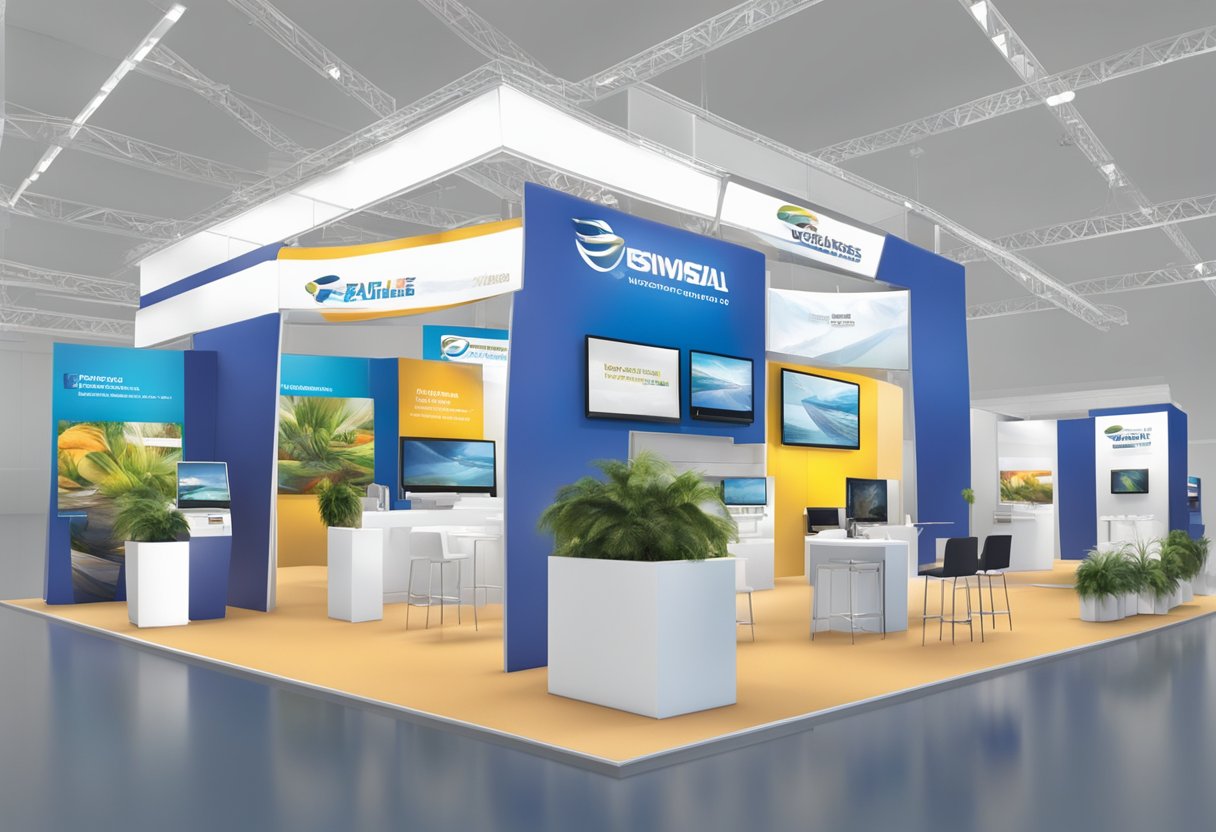
After the Event
After a trade show concludes, it’s important to assess the market return on investment, gather attendee feedback, and engage in effective post-show marketing to fully capitalize on the benefit of the efforts put into the event.
Evaluating Trade Show ROI
To determine the success of their trade show booth, exhibitors should conduct a thorough evaluation of their return on investment (ROI). This process involves comparing the total costs of participating in the trade show, including the investment in video/monitor displays, against the generated revenue and potential business opportunities. One efficient method is to track the number of leads and sales that were a direct result of the trade show booth participation. Companies measure ROI not just in terms of immediate sales but also based on long-term business relationships initiated at the event.
Gathering Feedback and Reviews
Actively seeking feedback and reviews from booth visitors is crucial for continuous improvement. This can be achieved through digital forms or follow-up emails asking for participants’ opinions regarding the trade show display and the overall experience. Such insights help organizers and exhibitors understand the impact of their presentation and how well they met their objectives. It’s also a chance to benchmark against the competition, evaluating the strengths and weaknesses of their own and competitors’ displays.
Post-Show Marketing and Lead Follow-up
Once the event is over, timely post-show marketing and lead follow-up are key to sustaining trade show success. Exhibitors should promptly contact leads gathered during the show, leveraging the personal interaction they had at their booth. Effective strategies include personalized emails, special offers, and phone calls to convert leads into customers. It is also a good practice to update the company’s ‘Contact Us’ page to reflect any trade show-specific inquiries, ensuring a continuous line of communication. These marketing efforts ensure that the momentum from the show carries forward, turning prospects into bona fide clients.
Partnering with Experts
In the dynamic arena of trade shows, collaborating with expert exhibit designers and strategists is essential for a company’s showcase success. Not only do these partnerships provide innovative exhibit design solutions, but they also enhance marketing efforts and promote brand awareness through tailored services.
Consultation and Design Services
Seeking professional consultation and design services is a decisive step for companies aiming to captivate audiences at trade shows. In-house designers with specialized expertise conduct thorough consultations to interpret a company’s brand and objectives. They utilize their skills in exhibition design to translate ideas into tangible, engaging custom trade show displays and exhibits.
Customized Display Solutions
Exhibition experts offer customized display solutions tailored to a company’s specific needs. Whether it requires a minimalistic approach or a complex, multi-media display, designers ensure the customized display effectively communicates the brand or company’s message. The use of high-quality video monitors integrated into the display can significantly increase visibility, sales and brand awareness.
Trade Show Marketing Strategies
An integral component of trade show success is the deployment of effective trade show marketing strategies. These strategies encompass the creation of compelling visual content and the use of recommendations to leverage traffic toward the display stand. Companies can count on experts to blend creative visuals with practical marketing to drive engagement with customers and enhance the return on their marketing efforts.
Frequently Asked Questions
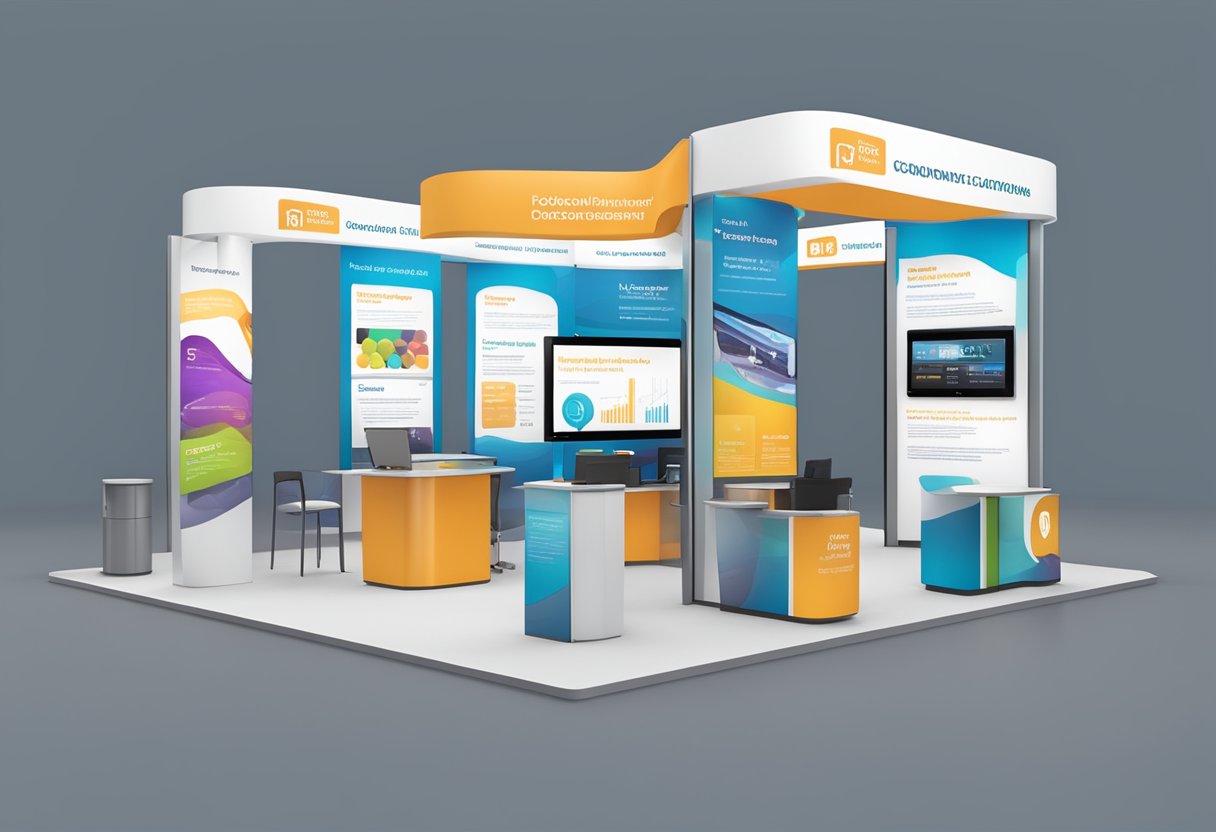
Monitors can significantly enhance a trade show display by adding dynamic content and interactive elements. This section explores common inquiries regarding the integration of monitors into trade show displays.
What options are available for incorporating monitors into a trade show display?
Options for including monitors in portable trade show range from mounting screens on the wall of a portable trade show show booth to freestanding kiosks. Exhibitors may choose between single large screens or multiple smaller units to create a multimedia experience. For more details, see The Dummies’ Guide to Using Digital Trade Show Displays.
How can I design a trade show booth that effectively integrates monitors for presentations?
Designing a booth that integrates monitors effectively requires careful planning to ensure visibility and accessibility. Monitors should be placed at eye level for users and in strategic locations in booths where they can attract attendees without creating congestion points.
What are some cost-effective solutions for adding monitors to pop-up trade show displays?
For cost savings, exhibitors can opt for portable monitor stands that can be easily attached to pop-up displays or use tablet holders for smaller, interactive displays. Renting monitors for the duration and price of the show can also be a budget-friendly option.
What are the benefits of using backlit trade show displays with monitor setups?
Backlit trade show displays can make monitor setups more striking by illuminating the screen’s surroundings, thus drawing more attention to the screen and displayed content. The contrast created by the lighting enhances the monitors’ visibility. Learn more at Frequently Asked Questions About Backlit Trade Show Displays.
How can I find local providers that offer trade show displays with monitor support?
Local providers can be found through online directories, industry references, or by attending trade shows to see displays in action. It’s important to investigate providers’ reputations and review portfolios of their previous work.
What should I consider when selecting portable trade show displays that accommodate monitors?
When selecting portable displays for monitors, one should assess the ease of setup, durability, and the weight of the monitor mount and the displays. Additionally, the displays and monitor mount should be designed with secure mounting options to ensure equipment stability and safety.
Related Posts
Games for Conventions: Engaging Activities for Event Success
Trade Show Backdrop 10×10: Maximizing Your Brand’s Visibility
Exhibit Accessories Essentials for Show-Stopping Displays
Tradeshow Booth Backdrop Essentials: Enhancing Your Display Strategy
Cleantech Forum North America 2024: A Glimpse into Sustainable Innovation
Fastener Show Las Vegas 2023: Unveiling Industry Innovations and Trends
Event Booths: Maximizing Engagement at Your Next Conference
Trade Show Booth Near Me: A Guide to Local Exhibiting Success
